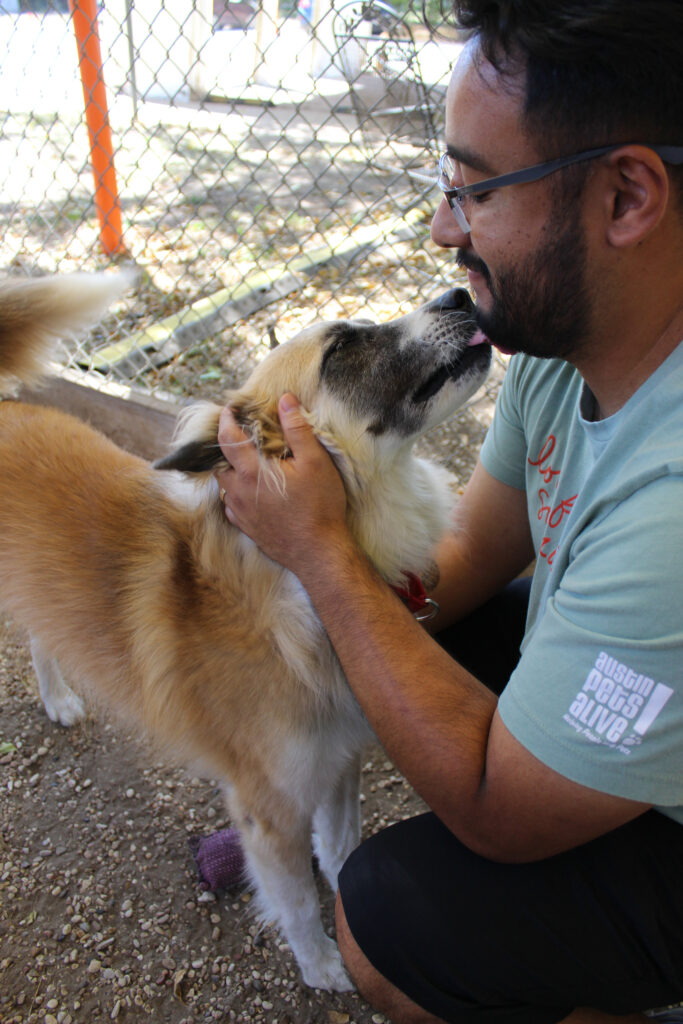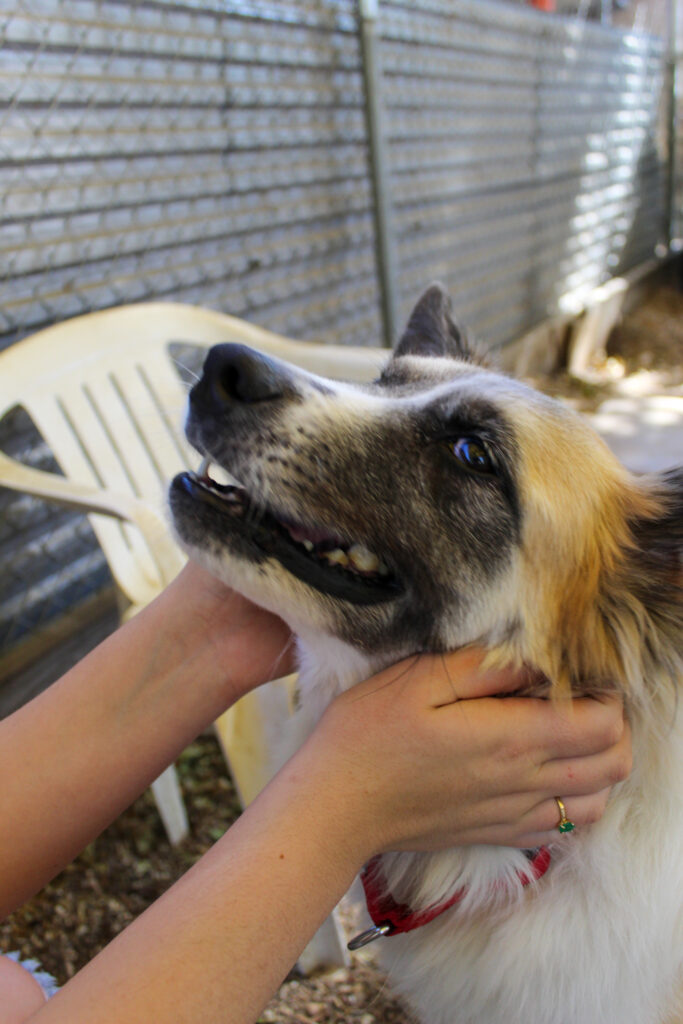Finding Forever Homes: Inside Austin Pets Alive’s Journey to Rehome Long-Stay Dogs
Meet the resilient residents of APA and learn about the community efforts to transform lives one adoption at a time

Tucked away just West of Downtown, the Austin Pets Alive (APA) shelter has been a pillar in Austin for more than a decade. Not to be mistaken for the city’s animal shelter, APA is a nonprofit, no kill shelter, that houses cats and dogs on site, and in foster homes around the city.
Behind the statistics are stories of resilience, hope and the transformative power of community support. The shelter faces significant challenges in providing extended care for their long-stay residents at approximately $30 per day per animal, not including additional medical care. Yet, the dedication of staff and volunteers keeps hope alive for every dog, regardless of how long they’ve waited for their forever home.
Breaking down barriers
“People want pets, not projects,” notes Jessica Borda, an APA staff member.
This simple observation underlies one of the biggest challenges facing long-stay dogs. Many of these animals are larger breeds, face rental restrictions or require specific living conditions that can make placement challenging. However, the shelter’s experience shows that when the right person connects with a dog – often through social media or personal interaction – these perceived barriers fade away.

Oatmeal
Since February 2023, Oatmeal has been waiting for her forever home at APA. Despite being paralyzed from the waist down, this four-year-old “gem of a dog” defies expectations daily with her sweet temperament and resilient spirit. As a “pink dog” – the shelter’s easiest handling category – she exemplifies how physical challenges don’t define a dog’s capacity for love and companionship.
While Oatmeal requires some special care, including assistance with bladder expression three times daily, shelter staff emphasize that her care routine is straightforward. “It feels like a water balloon over here on the left side, and you just kind of put pressure there and then they’ll pee,” explains one staff member. She can get around both with and without her wheelchair, though she’s limited to two hours daily in the mobility device.
Her charm hasn’t gone unnoticed – Oatmeal has even served as the Austin FC mascot and made several television appearances. Despite these moments in the spotlight and her gentle nature (she can likely live with both dogs and cats), Oatmeal has spent almost 300 days at the shelter. Staff members express both sadness and surprise at her extended stay, noting that she’s “as sweet and as patient as you could possibly be.”
While the shelter team works hard to give her extra attention and breaks in the conference room to help her cope with the stress of shelter life, they know what Oatmeal really needs is a loving home. For potential adopters concerned about managing her needs, APA offers ongoing support for differently-abled dogs and their families.
Jingle
At five years old, Jingle embodies both the challenges and potential of long-stay shelter dogs. This “nice mature lady,” as volunteer Jessica describes her, has spent 800 days waiting for her perfect match. While she’s proven herself as a dedicated student by passing intermediate training classes and participating in programs at Every Dog Behavior and Training, Jingle faces several hurdles in finding her forever home.
As a larger breed pitbull mix, Jingle encounters the unfortunately common barriers of breed restrictions and size limitations that many renters face in Austin. Her need for a yard further narrows the pool of potential adopters in a city where apartment living is common. Despite these challenges, Jingle’s positive qualities shine through. She excels at being home alone, proves herself good with people, and has demonstrated her adaptability through multiple successful sleepovers with volunteers and a previous three-week foster experience.
While her high-energy personality and sensitivity to outside sounds mean she needs an understanding adopter who can manage her reactivity on walks, these traits are balanced by her maturity and training accomplishments.

Chex Mix
Chex Mix, a five-year old resident who has spent over 300 days at APA. Described by staff as “so sweet” and an “overall” great dog, Chex Mix has become a beloved favorite among both staff and volunteers, even as he waits for the right family to recognize his potential.
Originally surrendered by his owner due to showing some defensiveness around humans, Chex Mix’s story highlights the importance of finding the right environment for each dog. Staff speculate his previous challenges may have stemmed from living in a high-traffic home or one with small children – common situations that can overwhelm some dogs. While this means he may not be suited for families with young children or homes with frequent visitors, it also means that in the right, calmer environment, Chex Mix could truly flourish.
His playful nature shines through in his interactions with other dogs, though staff emphasize the importance of proper introductions in neutral spaces. Like many intelligent dogs, he shows a particular attachment to his toys, leading staff to employ positive trading techniques during playtime – a simple accommodation that speaks to his ability to learn and adapt.
Despite a brief adoption in March 2023 that didn’t work out, Chex Mix’s fan club at the shelter remains convinced that the perfect match is out there: a home that can appreciate his sweet nature while understanding and working with his needs. His story reminds us that sometimes the most rewarding relationships come from taking the time to understand and work with a dog’s individual personality.
How to help
The shelter offers multiple ways for community members to make a difference:
- Foster a dog – even short-term stays help
- Participate in “Dog’s Day Out” – take a dog for a day trip
- Update bios and photos of shelter dogs
- Provide supplies for special needs dogs
- Share long-stay dog stories on social media
APA provides lifetime behavioral support for adopted dogs and works to reduce adoption barriers while maintaining transparency about each dog’s needs. As Luis, an APA employee notes, “Just because they can’t provide the most luxurious life for a dog doesn’t mean they’re a bad pet owner.” This philosophy of meeting the community where they are helps create more opportunities for successful adoptions.
Through community support and understanding, these long-stay residents can find their perfect matches – it just takes the right person willing to open their heart and home.

The power of fostering
One of the most impactful ways community members can help is through fostering. Chelsea Raisman, another staff member, emphasizes that even short-term fostering can make a crucial difference.
“Even short term fosters or sleepovers are still helpful, just for the dog to get a break from the shelter environment, and for them to learn how they behave in the home.”
The shelter offers various fostering options:
- Sleepovers: A one-night commitment that keeps a kennel open
- Short-term fostering: A temporary break from shelter life
- Foster-to-adopt: A trial period to ensure the right fit
Notably, APA’s teen foster program allows young people to earn community service hours while providing temporary homes for dogs in need. To learn more about their programs and how to support the shelter visit their website austinpetsalive.org.




